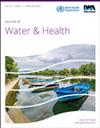How can machine learning predict cholera: insights from experiments and design science for action research
IF 2.5
4区 环境科学与生态学
Q3 ENVIRONMENTAL SCIENCES
引用次数: 0
Abstract
Cholera is a leading cause of mortality in Nigeria. The two most significant predictors of cholera are a lack of access to clean water and poor sanitary conditions. Other factors such as natural disasters, illiteracy, and internal conflicts that drive people to seek sanctuary in refugee camps may contribute to the spread of cholera in Nigeria. The aim of this research is to develop a cholera outbreak risk prediction (CORP) model using machine learning tools and data science. In this study, we developed a CORP model using design science perspectives and machine learning to detect cholera outbreaks in Nigeria. Nonnegative matrix factorization (NMF) was used for dimensionality reduction, and synthetic minority oversampling technique (SMOTE) was used for data balancing. Outliers were detected using density-based spatial clustering of applications with noise (DBSCAN) were removed improving the overall performance of the model, and the extreme-gradient boost algorithm was used for prediction. The findings revealed that the CORP model outcomes resulted in the best accuracy of 99.62%, Matthews's correlation coefficient of 0.976, and area under the curve of 99.2%, which were improved compared with the previous findings. The developed model can be helpful to healthcare providers in predicting possible cholera outbreaks.机器学习如何预测霍乱:实验和设计科学对行动研究的启示
霍乱是尼日利亚人死亡的主要原因。霍乱最主要的两个预测因素是缺乏清洁水源和卫生条件差。其他因素,如自然灾害、文盲和促使人们到难民营避难的内部冲突,也可能导致霍乱在尼日利亚蔓延。本研究的目的是利用机器学习工具和数据科学开发霍乱爆发风险预测(CORP)模型。在本研究中,我们利用设计科学观点和机器学习开发了一个 CORP 模型,用于检测尼日利亚的霍乱疫情。非负矩阵因式分解(NMF)用于降维,合成少数群体超采样技术(SMOTE)用于数据平衡。使用基于密度的噪声应用空间聚类(DBSCAN)检测异常值,并将其去除,从而提高了模型的整体性能,同时还使用了极梯度提升算法进行预测。研究结果表明,CORP 模型结果的最佳准确率为 99.62%,马修斯相关系数为 0.976,曲线下面积为 99.2%,与之前的研究结果相比有所提高。所开发的模型有助于医疗服务提供者预测可能爆发的霍乱疫情。
本文章由计算机程序翻译,如有差异,请以英文原文为准。
求助全文
约1分钟内获得全文
求助全文
来源期刊

Journal of water and health
环境科学-环境科学
CiteScore
3.60
自引率
8.70%
发文量
110
审稿时长
18-36 weeks
期刊介绍:
Journal of Water and Health is a peer-reviewed journal devoted to the dissemination of information on the health implications and control of waterborne microorganisms and chemical substances in the broadest sense for developing and developed countries worldwide. This is to include microbial toxins, chemical quality and the aesthetic qualities of water.
 求助内容:
求助内容: 应助结果提醒方式:
应助结果提醒方式:


